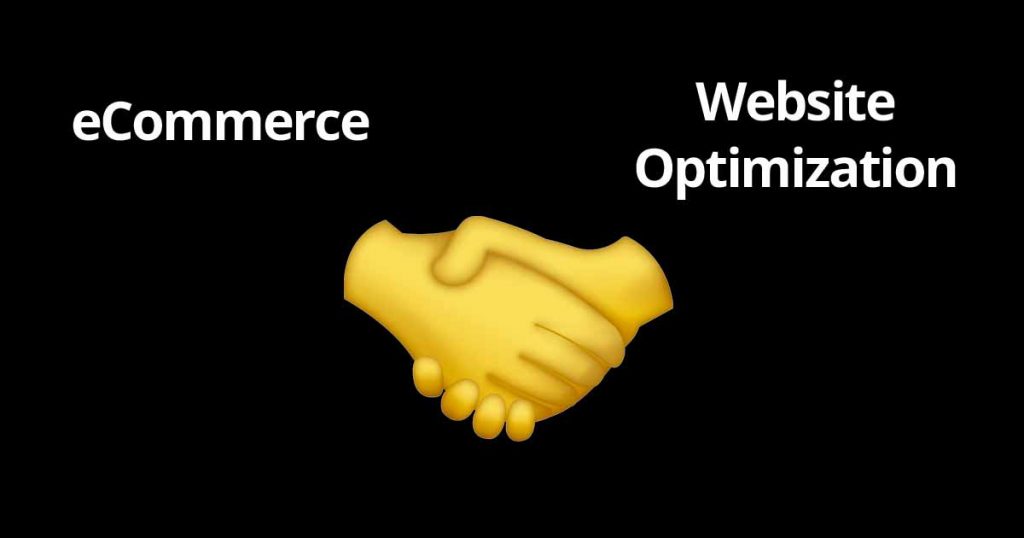Website Optimization: The Future and What It Means for your eCommerce Store

This is a new series dedicated to defining and learning about website optimization – from its inception all the way through to what the future may hold for the technology. As we enter a new decade, we’re zeroing in on one key element that’s been quietly bossing optimization practices since day one.
Yup. We’re talking about data in website optimization.
It’s mind-boggling to think about the volumes of data that are being produced every second of every day. According to very recent estimates, the United States uses almost five million GB data every single minute.
For every online action a person takes, data is created. If each byte had a story to tell, what would it be telling you?
That is the future.
Think about it. If you could make this data talk, if it could paint a picture of what your customers are doing on your website at any given time of the day or night, how would it inform the way you make decisions?
Before you had access to this ‘big data’, you could only guess. Maybe you had analytics, but they weren’t delivered in real-time. Often, by the time a data scientist figured out what was going on and translated it into language you could understand, the moment to act had passed.
That was then. And even then, it was quite clear that being able to harness this data was what we needed to do. Without complete control and immediate visibility, we’d be left wondering what would have happened had we known what we came to know when it was actually going down.
Understanding the Customer Experience in Website Optimization
Marketing professionals know that to be successful, you need to understand your audience, speak to them on their level, meet them on their own terms. You need to solve their problems before they even know they have one – and this is where having visibility into their behaviors comes into play.
Example: If you can take all the data that your customers create when they access your eCommerce website and visualize it as actionable insights, you will have an accurate idea of what’s working and what isn’t. From bottlenecks in the buying journey to what pages your customers visit most, you suddenly have a clear vision of the path to purchase and will be able to identify where that voyage needs a little boost.
Why UX Matters
Today, you’ll no doubt have heard about why user experience (UX) is so important. Meeting a customer’s expectations is the ultimate goal. It’s imperative that we satisfy their need for a fast, easy, and intuitive interface that delivers what they need immediately or risk losing their hard-earned dollars to a site that is better prepared to do so.
It’s no longer enough to have the best product out there (although it doesn’t hurt!). The truth is, most people would feel little loyalty, even to a product that is superior in its class, if the company made it difficult to buy. Unless you’re the only person making that thing, you’re eventually going to fail.
So, what do users actually expect?
#1: Convenience – Nobody wants to be forced into a process or a sequence that seems cumbersome or has too many steps to reach the end.
#2: Instant gratification – Why wait for a week or more and pay for the privilege when you can get something shipped from Amazon with same-day service – for free?
#3: They want options – Options on how to get in touch with you, buying options like reserve or buy online and pick up in-store, recurring orders, subscriptions, payment options, you name it. You need to provide plenty of options.
Of course, there’s more. But what it all boils down to is this: if you can’t meet the customer on their own terms, you stand to lose. Give them what they want, everybody wins.
Your UX Visualized
UX and experience analytics go hand in hand. Together, they give you the one-two that you need to understand the customer journey. The better you understand it, the more easily you can provide solutions that will light the way.
To take your real-time customer data and transform it into digestible pieces that give you a basis for those solutions – now, that’s the missing link.
The right data visualization software allows you to take a deeper dive into your buyer’s motivations. Presented in an easy to understand format, it gives you critical insights into how your site is performing through every possible combination of actions. This helps you identify points of friction so you can clear a path to conversion and gain enlightenment into the customer journey – all without a single data scientist in sight.
A Final Word About Website Optimization
It may surprise you – as a company who actually sells web optimization services – nothing we have presented in this series is a panacea. Gathering and understanding data about how and why your customers behave a certain way online is important. Critical, in fact.
But taken alone it is not enough to find lasting success. The actions individuals take online are rooted in psychology not technology. Motivation, fear, trust, etc. are the emotional fuel that powers our decision-making engine.
Its true, digital experiences are evolving at a rapid rate, and the ways in which we shop online is radically different even from 5 years ago – so as a leader, looking to grow your online business, collecting and analyzing data is your shortcut to understanding how you can better serve your customers. Just don’t stop there…



